The dishes that make a real French Christmas feast
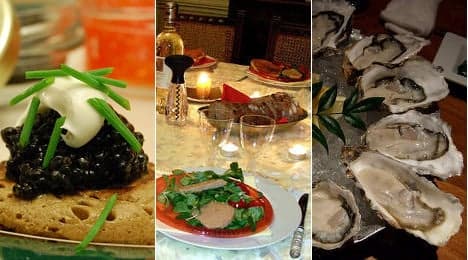
Want to do Christmas like the French? Here's some inspiration.
The culinary highlight of the French year is not for most families on Christmas Day, but late on Christmas Eve, and traditionally begins once folks have returned from midnight mass.
The feast is called "Le Reveillon", meaning "awakening" or "wake up", because it normally goes on until the early hours of the morning.
Whereas some cultures prefer to plump for a roast turkey and stuffing, with roast potatoes, gravy and a few extra trimmings, the French really push the boat out and flash the cash.
Here are ten Christmas dishes you can expect to eat if you're in France at Christmas
CAVIAR
Le Reveillon starts as it means to go on and with caviar or smoked salmon on blinis, the traditional apéritif sets the tone for the rest of the mammoth evening/morning.
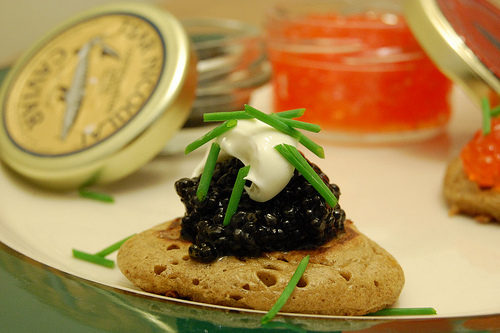 Photo: Stu Spivack/Flickr
OYSTERS
While many of us might grimace at the thought of seafood for Christmas dinner, the French and particularly Parisians have a big appetite for it. Oysters don't come cheap, of course, but apparently they are nice and big and juicy around this time of year. Oysters will normally be served up as an appetizer at Le Reveillon to get diners in the mood for, well, more food.
Photo: Stu Spivack/Flickr
OYSTERS
While many of us might grimace at the thought of seafood for Christmas dinner, the French and particularly Parisians have a big appetite for it. Oysters don't come cheap, of course, but apparently they are nice and big and juicy around this time of year. Oysters will normally be served up as an appetizer at Le Reveillon to get diners in the mood for, well, more food.
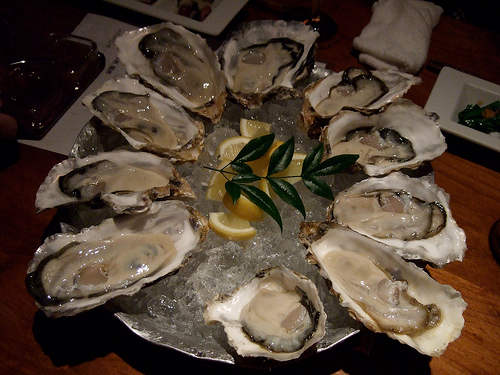 Photo: R Thumb/Flickr
LOBSTER
The French don't hold back on the spending when it comes to culinary customs for Le Reveillon, so continuing in the theme of pricey seafood, lobster and crab will often make an appearance on the menu.
Photo: R Thumb/Flickr
LOBSTER
The French don't hold back on the spending when it comes to culinary customs for Le Reveillon, so continuing in the theme of pricey seafood, lobster and crab will often make an appearance on the menu.
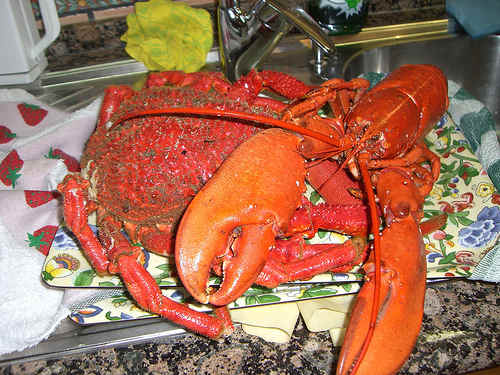 Photo: Chispita/Flickr
FOIE GRAS
Of course, a French Christmas feast wouldn't be the same without a portion (or four) of that typically festive treat - foie gras. There's no force-feeding here though as it's most often served up on slices of bread as a starter or apéritif with a sweet wine, normally a Sauternes.
Photo: Chispita/Flickr
FOIE GRAS
Of course, a French Christmas feast wouldn't be the same without a portion (or four) of that typically festive treat - foie gras. There's no force-feeding here though as it's most often served up on slices of bread as a starter or apéritif with a sweet wine, normally a Sauternes.
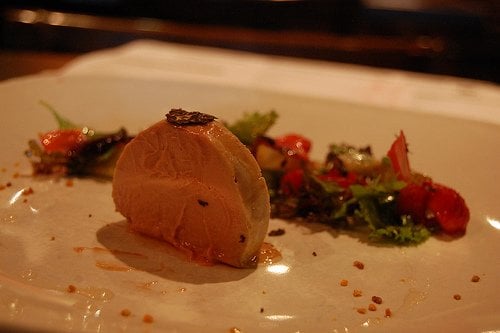 Photo: stu spivack/Flickr
ESCARGOTS
Snails might not be eaten as often in France as many people think, but they do make an appearance at Christmas, particularly in the region of Burgundy, home of the "escargot de Bourgogne". They'll be served up as a starter, with the usual garlic and parsley butter, to hide/bring out the slimey/smooth texture and flavour/tastelessness.
Photo: stu spivack/Flickr
ESCARGOTS
Snails might not be eaten as often in France as many people think, but they do make an appearance at Christmas, particularly in the region of Burgundy, home of the "escargot de Bourgogne". They'll be served up as a starter, with the usual garlic and parsley butter, to hide/bring out the slimey/smooth texture and flavour/tastelessness.
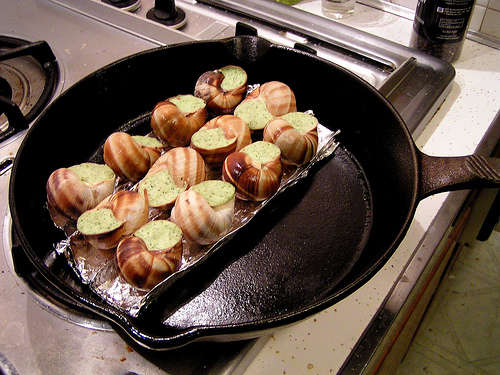 Photo: Craig Hatfield/Flickr
COQUILLES SAINT JACQUES
Scallops are a real mainstay of the Reveillon feast. And there's more than one way to cook a scallop, although served as a starter with a cream sauce is the most popular. Make sure you pick the right ones when you go to the market, or risk getting another more rude "awakening" on Christmas morning. No suspect juices or odours and they should be alive at the time of purchase.
Photo: Craig Hatfield/Flickr
COQUILLES SAINT JACQUES
Scallops are a real mainstay of the Reveillon feast. And there's more than one way to cook a scallop, although served as a starter with a cream sauce is the most popular. Make sure you pick the right ones when you go to the market, or risk getting another more rude "awakening" on Christmas morning. No suspect juices or odours and they should be alive at the time of purchase.
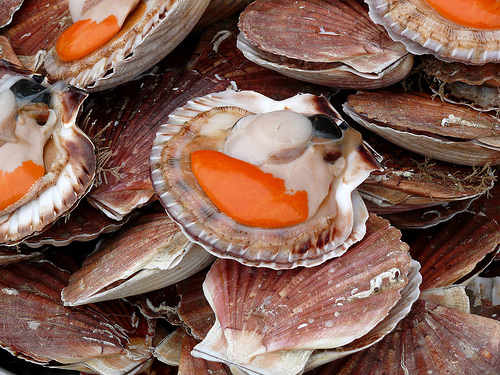 Photo: David Jones/Flickr
ROAST TURKEY WITH CHESTNUT STUFFING
When it comes to the main course for Le Reveillon, that dish changes year on year, and by region. One of the most popular remains the traditional turkey with a chestnut stuffing. Chestnuts are everywhere in France at Christmas, so it's natural you would find them stuffed inside turkey.
Photo: David Jones/Flickr
ROAST TURKEY WITH CHESTNUT STUFFING
When it comes to the main course for Le Reveillon, that dish changes year on year, and by region. One of the most popular remains the traditional turkey with a chestnut stuffing. Chestnuts are everywhere in France at Christmas, so it's natural you would find them stuffed inside turkey.
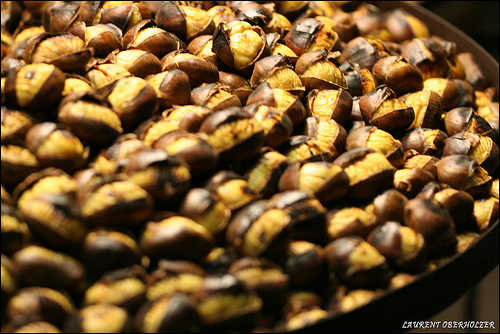 Photo: Lauren Tobs/Flickr
ALL KINDS OF BIRDS AND WILD FOWL
Including guinea fowl (pintade), quail (caille), pheasant (faisan), goose (oie) - particularly in the Alsace region of eastern France - and of course chicken (poulet). "If it flies it fries", seems to be the motto when it comes to traditional main courses for Le Reveillon.
Photo: Lauren Tobs/Flickr
ALL KINDS OF BIRDS AND WILD FOWL
Including guinea fowl (pintade), quail (caille), pheasant (faisan), goose (oie) - particularly in the Alsace region of eastern France - and of course chicken (poulet). "If it flies it fries", seems to be the motto when it comes to traditional main courses for Le Reveillon.
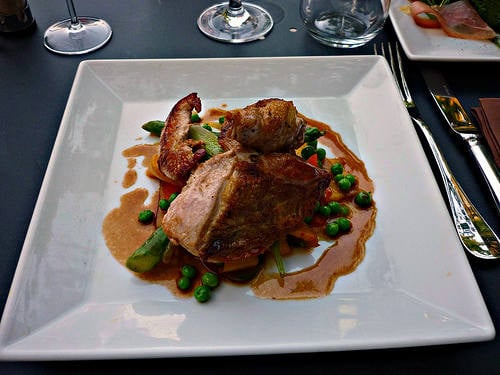 Photo: Austin Evan/Flickr
THIRTEEN DESSERTS
Once you've eaten all the seafood and birds you can imagine, as well as a cheese course, then you have no less than 13 desserts waiting for you at the end. Or at least you do if you are in Provence. The 13 desserts represent Jesus and the 12 apostles and are normally made up of dried fruit, such as dates and figs, as well as a traditional cake called "pompe a l'huile".
Photo: Austin Evan/Flickr
THIRTEEN DESSERTS
Once you've eaten all the seafood and birds you can imagine, as well as a cheese course, then you have no less than 13 desserts waiting for you at the end. Or at least you do if you are in Provence. The 13 desserts represent Jesus and the 12 apostles and are normally made up of dried fruit, such as dates and figs, as well as a traditional cake called "pompe a l'huile".
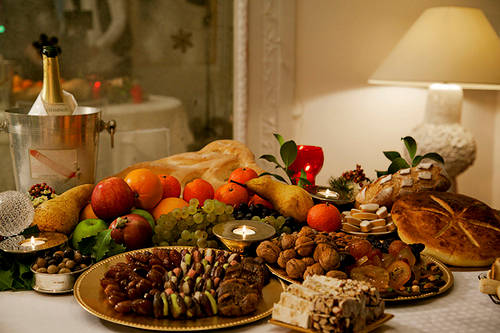 Photo: CRTPAC/Flickr
BÛCHE DE NOËL
Outside Provence, the likelihood is that the French will spare a little room in their bellies for the traditional Christmas chocolate log or "Bûche de Noël," as it's known. It's basically a rich chocolate cake wrapped up into the shape of a Yule Log. And after that all that is left to do is...
Photo: CRTPAC/Flickr
BÛCHE DE NOËL
Outside Provence, the likelihood is that the French will spare a little room in their bellies for the traditional Christmas chocolate log or "Bûche de Noël," as it's known. It's basically a rich chocolate cake wrapped up into the shape of a Yule Log. And after that all that is left to do is...
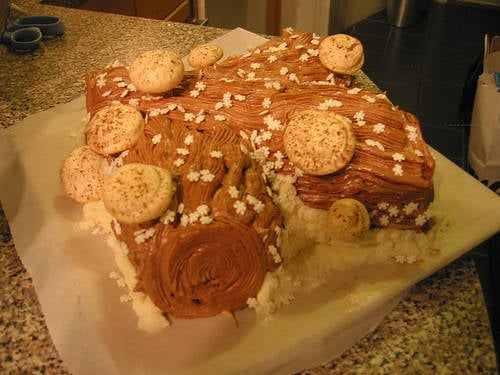 Photo: Tony Dolor/Flickr
WASH IT DOWN WITH CHAMPAGNE
No Christmas in France is the same without the bubbly (Champagne, that is, not Prosecco). It normally comes out at the beginning off Le Reveillon, to kick off proceedings and then will be put away to be replaced by a selection of wines, then digestifs. By the time all this is done, it will be around 3am on Christmas morning. So all that's left is to say "Joyeux Noël".
Photo: Tony Dolor/Flickr
WASH IT DOWN WITH CHAMPAGNE
No Christmas in France is the same without the bubbly (Champagne, that is, not Prosecco). It normally comes out at the beginning off Le Reveillon, to kick off proceedings and then will be put away to be replaced by a selection of wines, then digestifs. By the time all this is done, it will be around 3am on Christmas morning. So all that's left is to say "Joyeux Noël".
 Photo: Chris Chapman/Flickr
Photo: Chris Chapman/Flickr
Comments
See Also
The culinary highlight of the French year is not for most families on Christmas Day, but late on Christmas Eve, and traditionally begins once folks have returned from midnight mass.
The feast is called "Le Reveillon", meaning "awakening" or "wake up", because it normally goes on until the early hours of the morning.
Whereas some cultures prefer to plump for a roast turkey and stuffing, with roast potatoes, gravy and a few extra trimmings, the French really push the boat out and flash the cash.
Here are ten Christmas dishes you can expect to eat if you're in France at Christmas
CAVIAR
Le Reveillon starts as it means to go on and with caviar or smoked salmon on blinis, the traditional apéritif sets the tone for the rest of the mammoth evening/morning.

Photo: Stu Spivack/Flickr
OYSTERS
While many of us might grimace at the thought of seafood for Christmas dinner, the French and particularly Parisians have a big appetite for it. Oysters don't come cheap, of course, but apparently they are nice and big and juicy around this time of year. Oysters will normally be served up as an appetizer at Le Reveillon to get diners in the mood for, well, more food.
 Photo: R Thumb/Flickr
Photo: R Thumb/Flickr
LOBSTER
The French don't hold back on the spending when it comes to culinary customs for Le Reveillon, so continuing in the theme of pricey seafood, lobster and crab will often make an appearance on the menu.
 Photo: Chispita/Flickr
Photo: Chispita/Flickr
FOIE GRAS
Of course, a French Christmas feast wouldn't be the same without a portion (or four) of that typically festive treat - foie gras. There's no force-feeding here though as it's most often served up on slices of bread as a starter or apéritif with a sweet wine, normally a Sauternes.
 Photo: stu spivack/Flickr
Photo: stu spivack/Flickr
ESCARGOTS
Snails might not be eaten as often in France as many people think, but they do make an appearance at Christmas, particularly in the region of Burgundy, home of the "escargot de Bourgogne". They'll be served up as a starter, with the usual garlic and parsley butter, to hide/bring out the slimey/smooth texture and flavour/tastelessness.
 Photo: Craig Hatfield/Flickr
Photo: Craig Hatfield/Flickr
COQUILLES SAINT JACQUES
Scallops are a real mainstay of the Reveillon feast. And there's more than one way to cook a scallop, although served as a starter with a cream sauce is the most popular. Make sure you pick the right ones when you go to the market, or risk getting another more rude "awakening" on Christmas morning. No suspect juices or odours and they should be alive at the time of purchase.
 Photo: David Jones/Flickr
Photo: David Jones/Flickr
ROAST TURKEY WITH CHESTNUT STUFFING
When it comes to the main course for Le Reveillon, that dish changes year on year, and by region. One of the most popular remains the traditional turkey with a chestnut stuffing. Chestnuts are everywhere in France at Christmas, so it's natural you would find them stuffed inside turkey.
 Photo: Lauren Tobs/Flickr
Photo: Lauren Tobs/Flickr
ALL KINDS OF BIRDS AND WILD FOWL
Including guinea fowl (pintade), quail (caille), pheasant (faisan), goose (oie) - particularly in the Alsace region of eastern France - and of course chicken (poulet). "If it flies it fries", seems to be the motto when it comes to traditional main courses for Le Reveillon.
 Photo: Austin Evan/Flickr
Photo: Austin Evan/Flickr
THIRTEEN DESSERTS
Once you've eaten all the seafood and birds you can imagine, as well as a cheese course, then you have no less than 13 desserts waiting for you at the end. Or at least you do if you are in Provence. The 13 desserts represent Jesus and the 12 apostles and are normally made up of dried fruit, such as dates and figs, as well as a traditional cake called "pompe a l'huile".
 Photo: CRTPAC/Flickr
Photo: CRTPAC/Flickr
BÛCHE DE NOËL
Outside Provence, the likelihood is that the French will spare a little room in their bellies for the traditional Christmas chocolate log or "Bûche de Noël," as it's known. It's basically a rich chocolate cake wrapped up into the shape of a Yule Log. And after that all that is left to do is...
 Photo: Tony Dolor/Flickr
Photo: Tony Dolor/Flickr
WASH IT DOWN WITH CHAMPAGNE
No Christmas in France is the same without the bubbly (Champagne, that is, not Prosecco). It normally comes out at the beginning off Le Reveillon, to kick off proceedings and then will be put away to be replaced by a selection of wines, then digestifs. By the time all this is done, it will be around 3am on Christmas morning. So all that's left is to say "Joyeux Noël".
 Photo: Chris Chapman/Flickr
Photo: Chris Chapman/Flickr
Join the conversation in our comments section below. Share your own views and experience and if you have a question or suggestion for our journalists then email us at [email protected].
Please keep comments civil, constructive and on topic – and make sure to read our terms of use before getting involved.
Please log in here to leave a comment.